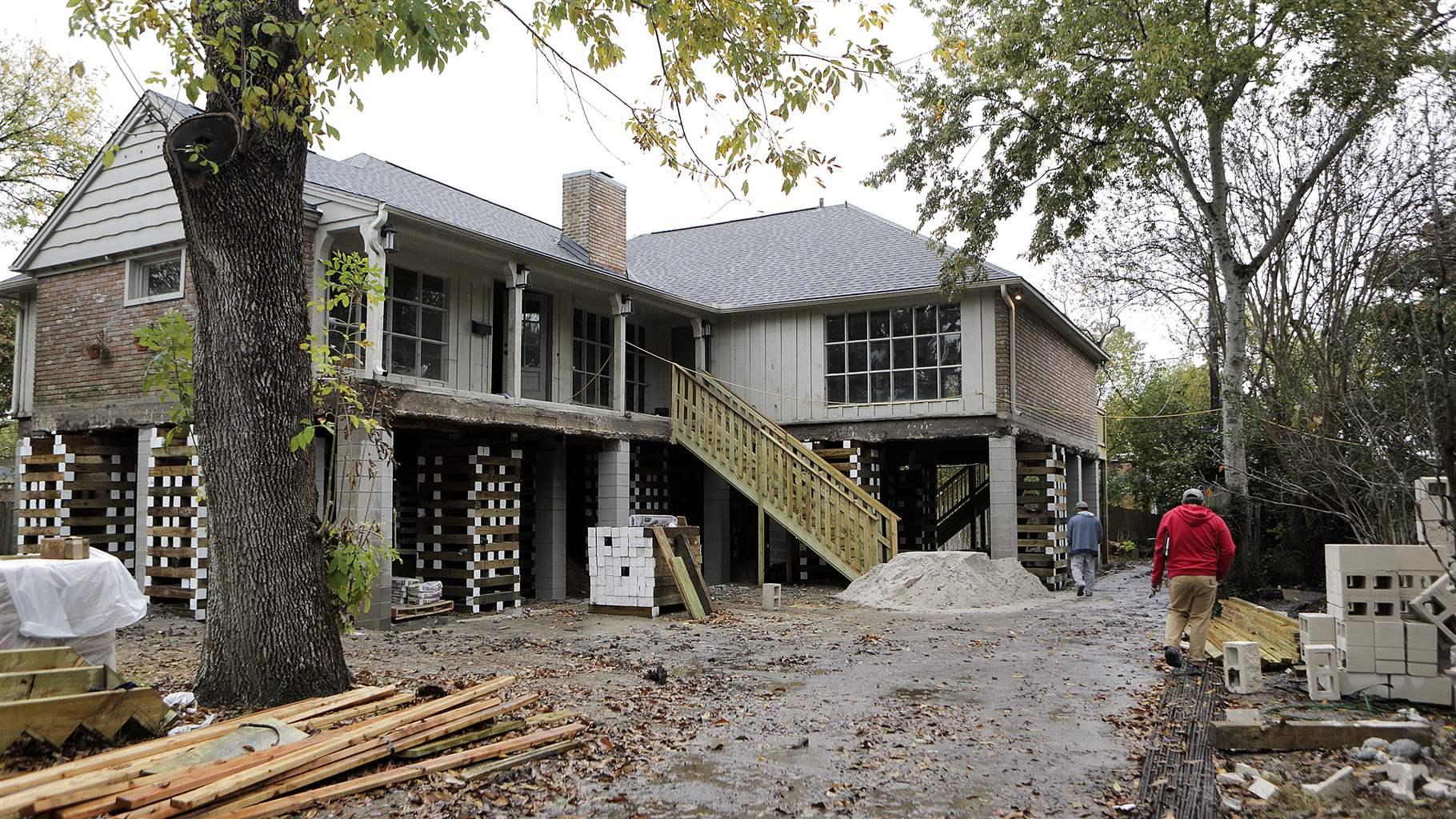Flood Readiness Gets Bigger in Texas
Governor signs laws to invest in risk reduction, flood planning

Note: This article was updated June 19, 2019, to correct when Hurricane Harvey struck Texas and reflect the recent signing of Texas S.B. 339.
When Hurricane Harvey battered Texas almost two years ago, it left 89 people in the state dead and caused an estimated $125 billion in damage to property and infrastructure, including more than 200,000 homes and businesses. Since then, even as communities throughout the state have worked to rebuild and recover from the second-costliest natural disaster in U.S. history, Texans have experienced additional severe floods, including two that prompted presidential disaster declarations. As recently as this month, flooding inundated north-central Texas and the Houston area.
The frequency of these events shows a clear need to increase flood resiliency. This week, Texas Governor Greg Abbott (R) took a big step toward that goal by signing S.B. 7 and 8, bills that will work in tandem to improve the state’s flood preparedness. S.B. 7 taps the state’s rainy day fund to finance mitigation projects identified in the state plan. S.B. 8 requires officials to develop the state’s first flood plan comprising regional watershed-based strategies. These laws will support communities in addressing their shared vulnerabilities and prioritizing resources for cost-effective mitigation projects that benefit Texans.
In addition to traditional pre-disaster mitigation projects that elevate repeatedly flooded homes and remove vulnerable properties from flood plains, S.B. 7 ensures that nature-based initiatives that absorb floodwaters—such as restored wetlands, salt marshes, and streams—are eligible for funding. These types of projects are fiscally sound investments that will pay large dividends to the state over time. Research has shown that the federal government saves $6 in future losses for every dollar spent on pre-disaster mitigation. Additionally, the funds from the rainy day account will also assist with Hurricane Harvey recovery, provide matching dollars for federal grants, and support public education.
A third bill, S.B. 339, that was signed will strengthen real estate disclosure requirements to better inform homebuyers of a property’s flood history. This includes a mandate that sellers alert property buyers if a home has been affected by flooding due to natural events or releases from reservoirs. It will also require that sellers notify buyers if a property is in a flood hazard area and if the seller has filed claims or received disaster assistance from the federal government. With this flood disclosure law—one of the most comprehensive of its kind in the country—Texas homebuyers will be able to learn whether a property has flooded multiple times, determine if they are required to carry flood insurance, and factor the cost of mitigation into their mortgage.
According to a 2018 poll for The Pew Charitable Trusts, Texans support stronger requirements for real estate disclosure and investing in mitigation and flood-ready infrastructure—a sentiment that holds across political parties, and is also true for residents of other hurricane-impacted states.
Collectively, the new laws will provide Texans and their communities with the resources they need to better prepare for floods and be more aware of flood risks, which will improve public safety and reduce the cost of future disaster recovery.
Laura Lightbody directs and Yaron Miller is an officer with The Pew Charitable Trusts flood-prepared communities initiative.












